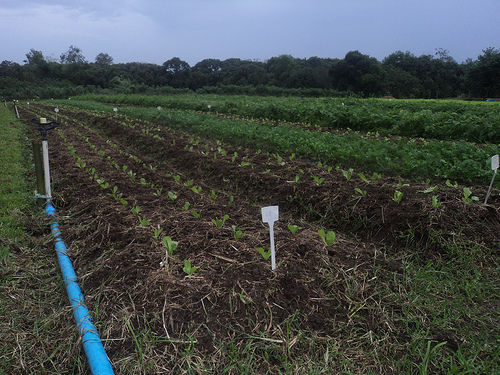Fabiana Frayssinet
SEROPEDICA, Brazil, Jun 21 (TerraViva) – An agroecological farm outside of Rio de Janeiro is a testing ground for scientists and agronomists in Brazil, who have worked there for two decades to show that it is possible to produce a wide range of natural agricultural products in a cheap, efficient way that harms neither the environment nor human health.

Everything produced on the Haciendita KM 47 is “ecologically correct and very tasty.” Credit: Fabiana Frayssinet/TerraViva
The Integrated Agroecological Production System, better known as the “Haciendita agroecologica KM 47” or “Kilometre 47 agroecological farm”, covers 60 hectares of land in the municipality of Seropedica, 47 km from Rio de Janeiro.
Researchers from EMBRAPA, the government’s agricultural research agency, the Federal Rural University of Rio de Janeiro and other government institutions have been carrying out field studies in agroecology on the farm since 1993.
The farm integrates chemical-free agricultural and livestock production, based on crop diversification, and the main target beneficiaries of the research are family farmers, who account for 75 percent of the labour force in the Brazilian countryside.
“Ecological agriculture seeks to some extent to reproduce the conditions of the natural environment, and in a natural environment, what ensures dynamic equilibrium is the biodiversity of species,” EMBRAPA agronomist Ernani Jardim told TerraViva.
“When that diversity is reduced, it opens the door to the emergence of some pest or disease or environmental condition that causes an imbalance,” he added.
Biodiversity and sustainable water and soil management have transformed the landscape of grasslands here into an oasis where 50 kinds of plants are grown, including fruit trees, vegetables, cereals and forage crops.
The farm, a green paradise in a degraded portion of the Baixada Fluminense or Fluminense Lowlands – a region sometimes considered to be part of the Rio de Janeiro greater metropolitan area – also has sections devoted to the severely threatened Mata Atlântica or Atlantic Forest ecosystem, and a botanical garden.
Organic fertiliser is also made here, using vegetable waste and manure from cows that produce organic milk.
Net earnings of 30,000 dollars a year were obtained from just one hectare, said Alessandra Carvalho, another EMBRAPA researcher.
Prevention is emphasised in the fight against pests and diseases. Pest-resistant species are planted, the best production periods are chosen for planting, crops are diversified, and the water used for irrigation is monitored to avoid fungus.
“Natural enemies” are also used, such as traps for harmful insects, botanical extracts, or, in extreme cases, substances that are permitted in organic agriculture.
Mulch is used to repel pests and prevent erosion and weeds.
The dairy station is also organic. Homeopathic remedies are used instead of antibiotics and parasiticides, and the barns have good ventilation and receive sunlight. The aim is “the animal’s welfare,” because if livestock are treated well they fall sick less frequently, said Mónica Florio, a veterinarian with the agricultural company of the state of Rio de Janeiro, PESAGRO.
The veterinarian said that in just one year, the health of the cows improved, and parasitic infections and reproductive problems were brought under control.
Production was “excellent” – between 13 and 14 litres per animal, she added. And it was not necessary to buy animal feed, because the cows are fed on grass or forage grown on the farm.
On another section of the farm, Daniel Caravalho, a researcher at the Federal Rural University of Rio de Janeiro, is developing solar energy and irrigation systems based on simple technologies that use anything from bamboo to old washing machine parts.
A table with snacks and juice prepared using organic vegetables, fruit and milk is the best way to sum up the ecofarm’s success.
“Is it just ecologically correct, or is it tasty as well?” Argentine journalist Laura Chertkoff asked TerraViva, to which this journalist responded: “Ecologically correct and very tasty.”
* This story was originally published by IPS TerraViva.







 Add to Google
Add to Google







